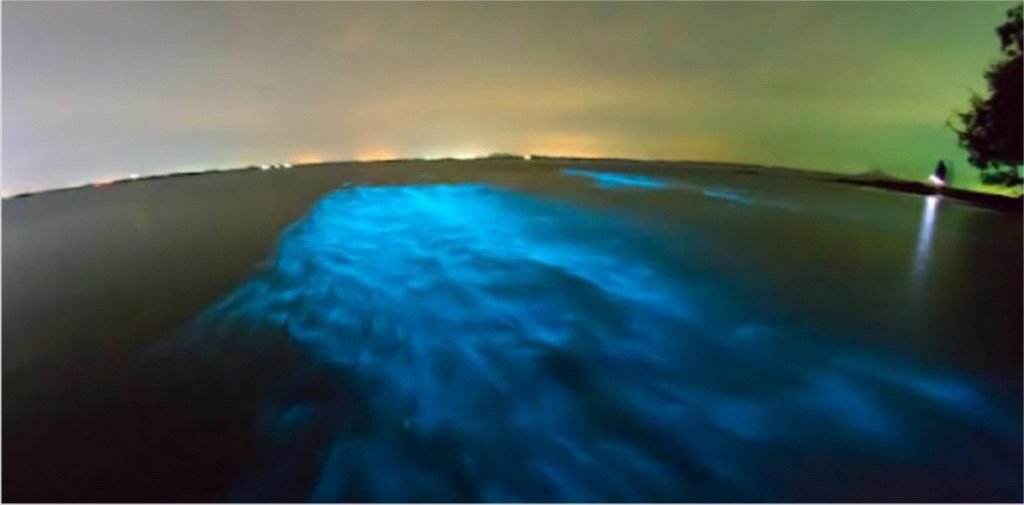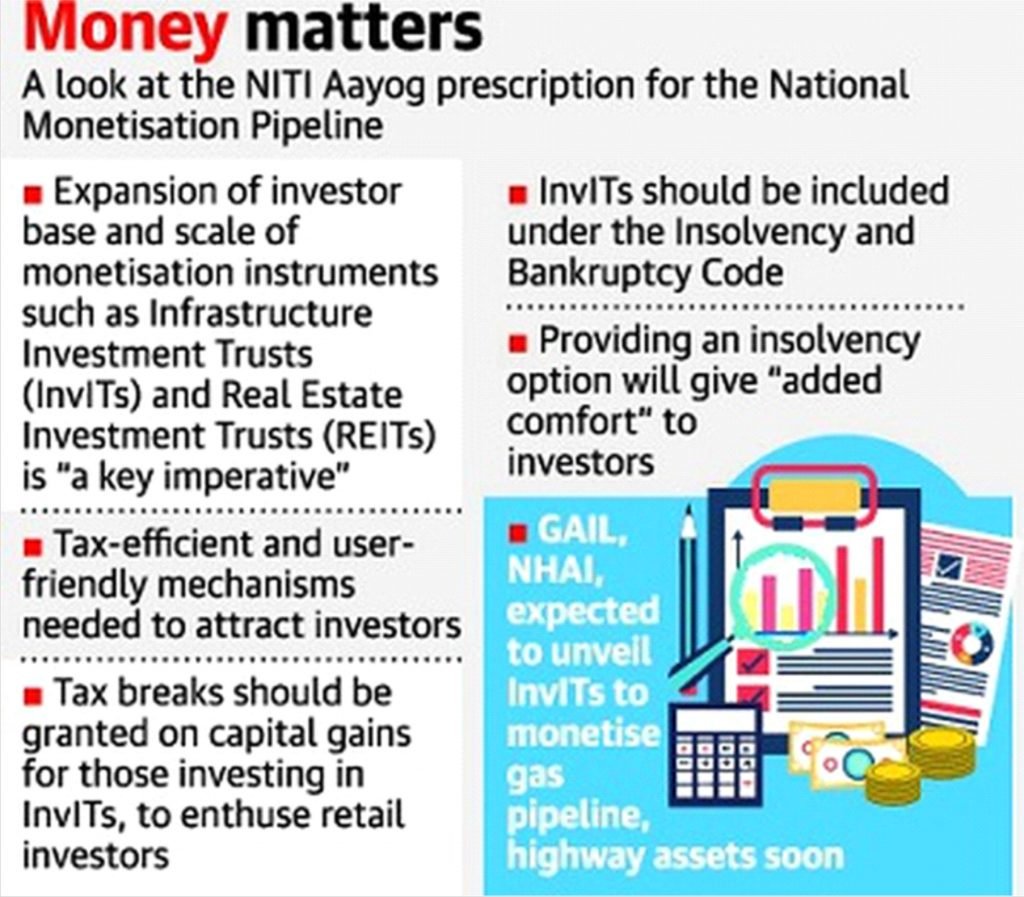Milky Sea Phenomenon
Down to Earth
GS 3: Science and Technology
Context:
- Scientists are using new satellite technology to find glow-in-the-dark milky seas. Only about two or three milky seas occur per year worldwide, mostly in the waters of the northwest Indian Ocean and off the coast of Indonesia.
Milky seas:
- They are also called mareel, a luminous phenomenon in the ocean in which large areas of seawater (up to 6,000 sq mi or 16,000 km2) appear to glow translucently (in varying shades of blue).
- Such occurrences glow brightly enough at night to be visible from satellites orbiting Earth.
- They are a rare nocturnal phenomenon in which the ocean’s surface emits a steady bright glow.
- They can cover thousands of square miles.
- But because of their remote and elusive nature, they are extremely difficult to study and so remain more a part of that folklore than of science.
Causes:
- Milky seas are understood as a kind of marine bioluminescence arising from a saprophytic relationship between luminous bacteria and microalgae that expresses on the macroscale.
- Bioluminescence is light produced by a chemical reaction within a living organism.
- Scientists have found a strain of luminous bacteria called Vibrio harveyi colonizing algae at the water’s surface.
- Luminous bacteria cause the particles they colonize to glow. These bacteria thrive in the guts of fishes, so when their populations get too big for their main food supply, a fish’s stomach makes a great second option.
- The Indian Ocean Dipole (IOD): Like the El Niño, the IOD is an aperiodic basin-scale air-sea coupled oscillation characterized by an east–west SST gradient between the western equatorial (50–70° E, 10 S–10° N) and southeastern (90–110° E, 10S–10° N) regions of the Indian Ocean.
- The IOD begins in early-to-mid austral summer and peaks in the late-fall/early-winter.
- During its positive phase, the IOD corresponds to warm/wet conditions with warm pooling waters on the western side of the Indian Ocean, and cool/dry conditions with strong easterly winds on the eastern side.
- These winds generate upwelling of cool, nutrient-rich coastal waters which drift offshore with the currents, leading to algal blooms over a broad region, and potentially, conditions favourable for milky sea genesis.
Detection methods:
- Satellites offer a practical way to monitor the vast oceans, but it takes a special instrument able to detect light around 100 million times fainter than daylight.
- Day/Night Band imagery: The Day/Night Band is planned for the National Oceanic and Atmospheric Administration’s new constellation of satellites.
- The DNB is a low-light visible/near-infrared (500–900 nm spectral bandpass) scanning radiometer offering global coverage once per day, built-up from composites of its 3060 km-wide imagery swath.

National Monetisation Pipeline (NMP)
The Hindu
GS 3: Indian Economy
Context:
- To make the National Monetisation Pipeline (NMP) a success, the government should give Income Tax breaks to attract retail investors into instruments such as Infrastructure Investment Trusts (InvITs), the NITI Aayog has recommended.
About:
- The Centre’s think tank driving the NMP, estimated to raise almost ₹6 lakh crore for the exchequer over four years, has also called for bringing such trusts within the ambit of the Insolvency and Bankruptcy Code (IBC) to provide greater comfort to investors.
- Bringing in policy and regulatory changes to scale up monetisation instruments such as InvITs and Real Estate Investment Trusts (REITs) and expand their investor base have been identified as a critical element for the NMP.
- The government plans to use the InvIT and REIT route to monetise public assets such as highways, gas pipelines, railway tracks and power transmission lines.

Is monetization beneficial?
Under-utilised assets
- E.g., A port or an empty piece of land that is not being used adequately.
- Here, the private player makes the necessary investment to make the asset more revenue-generating and reaps the benefits from it.
- So, this is a win-win situation as –
-
- the government gets a ‘fair’ value for its assets
- the economy benefits from an increase in efficiency (increased cash flows from the asset)
- the private player gets its return on investment
Well-utilised assets
- While NMP’s focus is on under-utilised assets, the list of projects includes well-utilised assets also. E.g., monetising a highway that has good traffic.
- In this case, the private player has little incentive to invest and improve the assets’ efficiency as –
-
- anyways, it can operate the assets as they are
- the cost of capital is higher (than that for a public authority), which could offset the benefit of any reduction in operating costs made
- In any case, the Government earns lesser revenues than what it might earn if it operated the assets itself.
- Clearly, the benefits are likely to be greater when under-utilised assets are monetised.
- But private players will prefer well-utilised assets because cash flows and returns are more certain. But this does not go well with the larger public interest.
Which is the effective mode (PPP or InvIT) of monetization?
Challenges in PPP [Public Private Partnership] route
- Getting the valuation of the assets right over a long-term horizon, say, 30 years is hard as this involves –
-
- Rightly assessing the growth rate of the economy over such a period.
- In case of roads – Other factors such as the level of economic activity in the area, prices of fuel and vehicles, alternative modes of transport and their relative prices, etc.
- In some cases, the consumer and the economy end up bearing the high cost.
- Also, the life of the asset may not be long when the government receives it back after the agreement period. In that case, asset monetisation virtually amounts to sale.
InvIT – the Infrastructure Investment Trusts
- These are mutual fund-like vehicles. While in mutual funds, investors invest in equity stocks, in InvIT, the investment is in infrastructure projects.
- In the InvIT route, the public authority continues to own the rights to a significant portion of the cash flows and to operate the assets.
- So, the issues that arise with the transfer of assets to a private party (under PPP) are less here.
What should be done on the implementation side?
- The Government can set up an Asset Monetisation Monitoring Authority to independently monitor the monetization process.
- Staffed by competent professionals, the Authority should look into –
- the valuation of the assets
- the impact on price charged to the consumer
- the choices on assets (under-utilised or well-utilised assets)
- the experience across different sectors, etc.
Delhi High Court on ‘Right to be Forgotten’
Indian Express
GS 2: Indian Polity
Context:
- The Delhi High Court, in a recent case, upheld the view that the “Right to Privacy” includes the “Right to be Forgotten” and the “Right to be Left Alone”.
What is the case on?
- The court’s order came in response to a suit filed by a Bengali actor.
- Some of the demonstrational videos of her that did not go for streaming are in circulation in the internet.
- She has not permitted even the producer of the videos to publish them.
- The videos are being portrayed in a manner that infringes her privacy.
- Earlier, Ashutosh Kaushik who won a reality TV show made a plea saying that his videos, photographs and articles etc. be removed from the internet citing his “Right to be Forgotten”.
What are the Court’s remarks?
Right to be forgotten or the right to erasure, is the right to have personal information removed from the Internet and other directories.
Right to be left alone – The State or the society will not interfere in the individual choices of a person so long as they do not cause harm to others. State intrusion is allowed only if necessitated by a just, reasonable, and fair law.
- The Court has already held that “right to privacy” includes the right to be forgotten and the right to be left alone as “inherent aspects”.
- Explicit videos that are being circulated have a clear and immediate impact on the reputation of the person seen in the videos.
- The court thus called for protection of the plaintiff from invasion of her privacy on account of such publication/transmission of the videos.
How legally sound is the ‘Right to be Forgotten’ in India?
- Fundamental right – In 2017, the Right to Privacy was declared a fundamental right by the Supreme Court in its landmark verdict.
- It held that the right to privacy is protected as an intrinsic part of the right to life and personal liberty under Article 21 of the Constitution.
- It is thus part of the freedoms guaranteed by Part III of the Constitution.
- Section 20 of the Personal Data Protection Bill – The data principal shall have the right to restrict or prevent the continuing disclosure of his/her personal data by a data fiduciary where such disclosure –
- has served the purpose for which it was collected or is no longer necessary for the purpose;
- was made with the consent of the data principal under section 11 and such consent has since been withdrawn; or
- was made contrary to the provisions of this Act or any other law for the time being in force.
Way ahead:
- The judiciary should engage in a detailed analysis of the Right to be Forgotten and evolve a mechanism for balancing the conflicting rights of privacy and freedom of expression.

